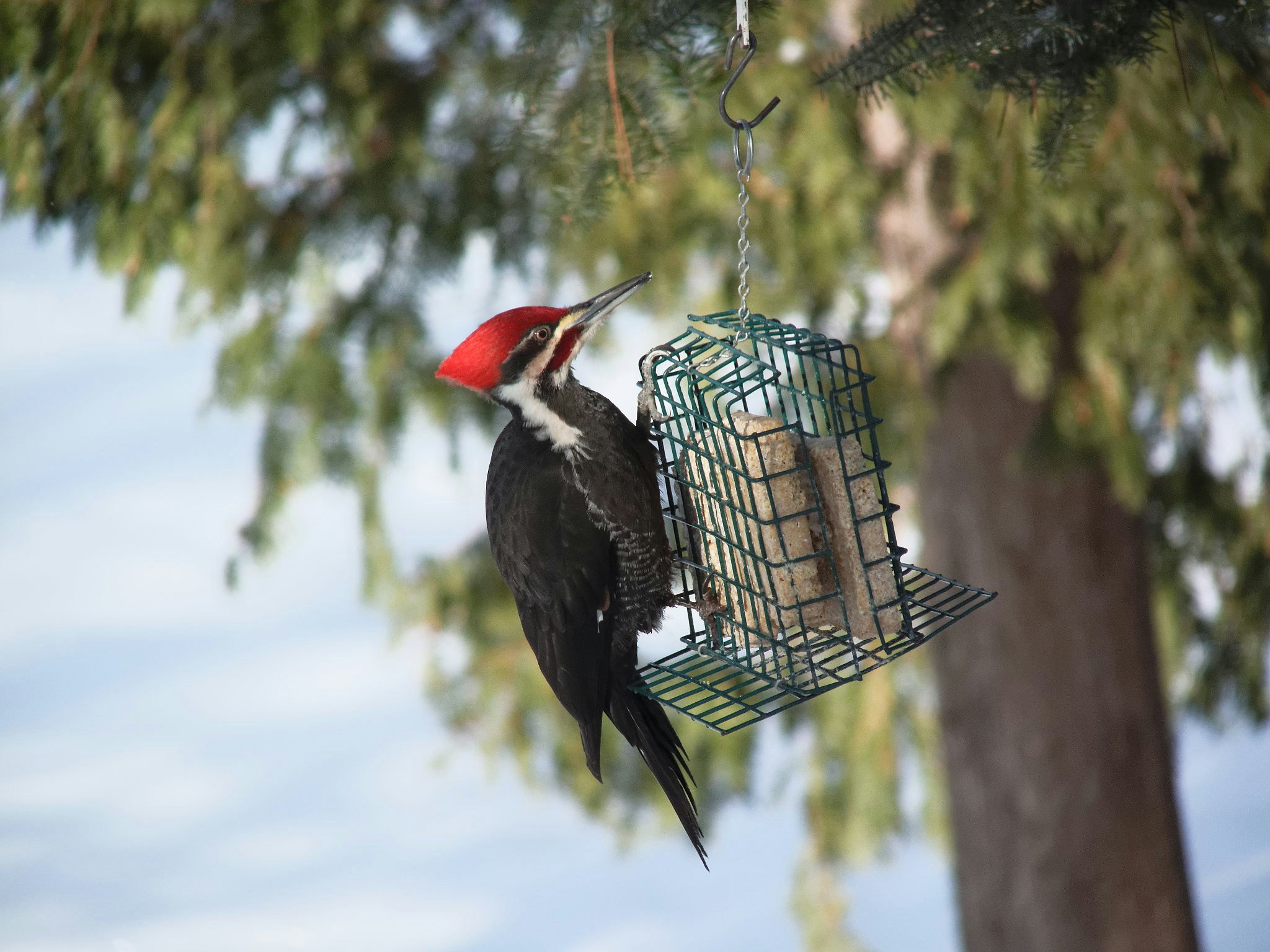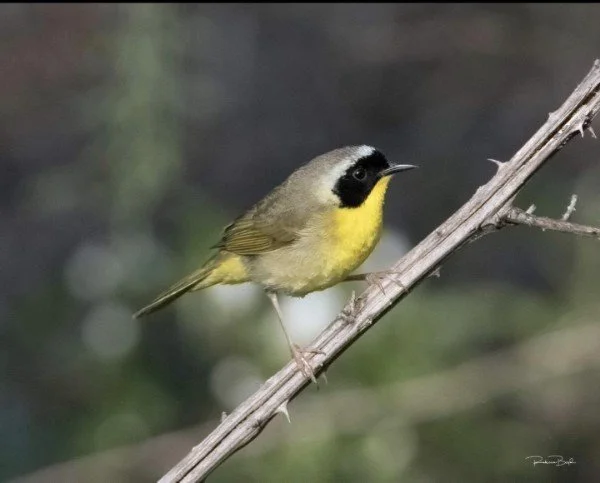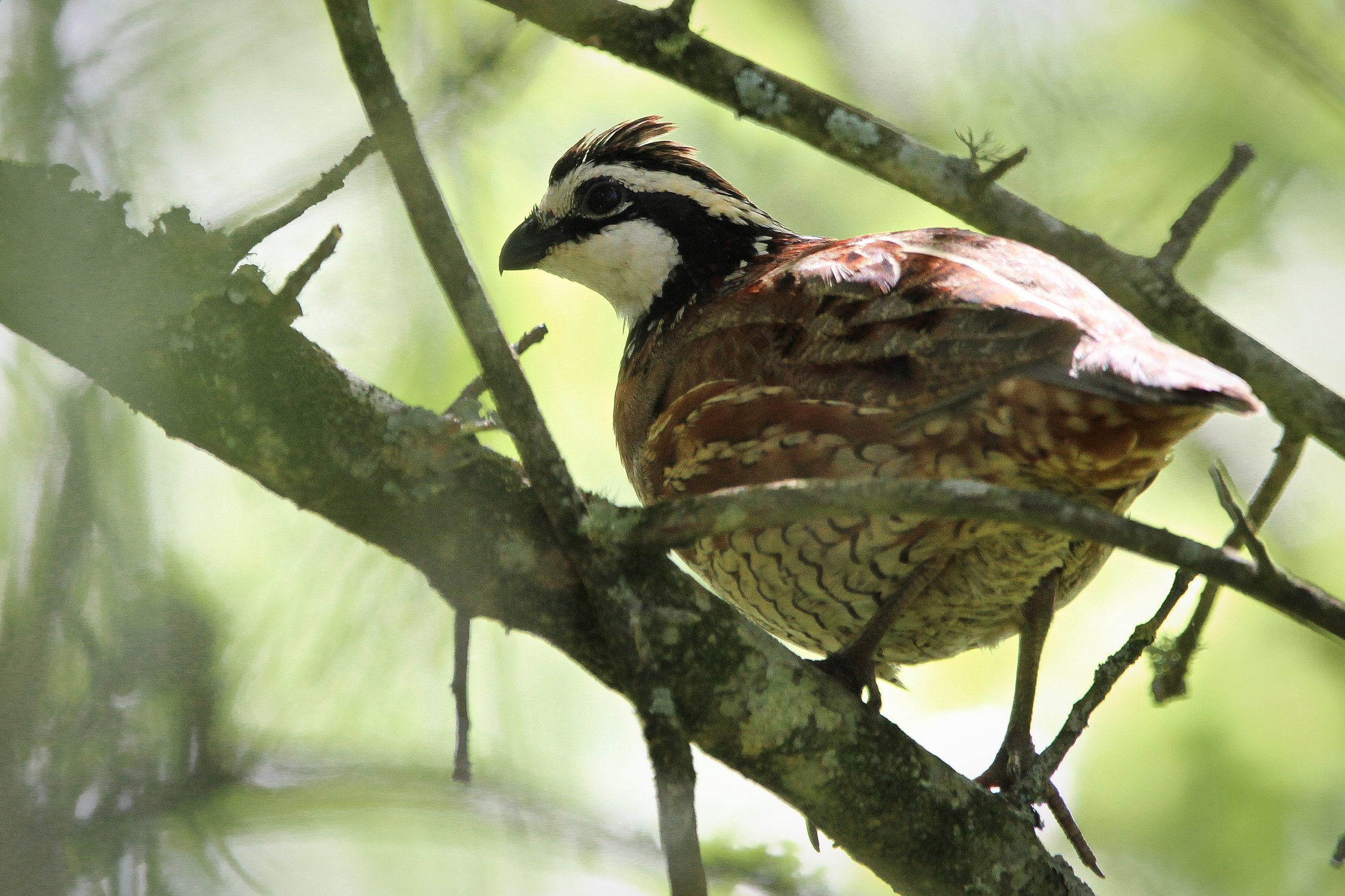
Vote for our 2026 Bird of the Year!
$1 equals 1 vote! The bird with the most votes will be our bird of the year for 2026. Keep checking back for updates!

Bird of the Year Votes So Far
The Bird of the Year program helps teach kids and adults about a new bird each year—your voting dollars will support these activities. In 2025, the Friends of Seven Islands selected the Pileated Woodpecker as the Bird of the Year. Scroll down to learn more about our three candidates for Bird of the Year 2026!
Photo by Becky Boyd at Seven Islands State Birding Park
Common Yellowthroat
Geothlypis trichas
ORDER: Passeriformes
FAMILY: Parulidae
length: 5”
wingspan: 6.75”
A small, lively New World warbler, first catalogued by biologist Carl Linneaus in 1776, the Common Yellowthroat is easy to recognize once you know what to look—and listen—for!
Identification:
The male sports a bright yellow throat, breast, and belly, accented by a bold black mask. The female lacks the mask but has the same vibrant yellow underside and a subtle tawny-brown back.
Habitat and Behavior:
Yellowthroats prefer wetlands, grasslands, and brushy edges near water. They flit low among the vegetation, hunting for insects and calling frequently. Their cheerful “witchety-witchety-witchety” song is often heard long before the bird is seen — and once heard, rarely forgotten!
Migration:
These warblers are warm-weather residents in East Tennessee, typically seen from May through October. In winter, they migrate south to the southern United States, Mexico, and Central America.
Where to Look:
In summer, take a walk along the Upland Trail Inner Loop, or other grassland trails throughout the park. Listen for their distinctive call from within the tall grasses.
Photo by Joshua J. Cotten
Belted Kingfisher
Megaceryle alcyon
ORDER: Coraciiformes
FAMILY: Alcedinidae
length : 12.6”
wingspan: 20”
Roughly the size of a blue jay, the belted kingfisher is one of the park’s most distinctive river birds.
Identification:
Dark bluish-gray above and white below with a blue band across the chest and a prominent white collar. Both sexes have a shaggy crest and a large, dagger-shaped bill. Females are more colorful, sporting an extra chestnut band across the breast—one of the few bird species where the female is brighter than the male.
Habitat and Behavior:
Kingfishers are almost always found near water—rivers, streams, and lakes—where they perch on branches or posts overlooking the surface. They dive headfirst to catch small fish and return to a perch to eat their catch whole.
Sounds and Sightings:
Listen for their loud, rattling call as they fly low over the water or hover in place while hunting.
Where to Look:
A great place to spot a kingfisher year-round is along the Seven Islands Loop Trail on the north side of the bridge. Watch for one perched in a craggy sycamore above the rapids or diving into the river below.
Photo by Kelly Fox at Seven Islands State Birding Park
Northern Bobwhite
Colinus virginianus
ORDER: Galliformes
FAMILY: Odontophoridae
length: 9.75”
wingspan: 13”
A small but mighty member of the quail family, the Northern Bobwhite is a signature species at Seven Islands. These beautifully speckled ground-dwellers are perfectly camouflaged for their grassland habitat. Males are slightly darker and more distinctly marked than their mates, with bold facial stripes that set them apart.
Habitat and Behavior:
Bobwhites live on the ground, nesting among grasses and shrubs where they find cover from predators. They move in small groups, called coveys, and rely on open grasslands and early successional habitats—ecosystems that are increasingly rare across the Southeast.
Conservation:
The Northern Bobwhite is the only quail species native to Tennessee and a year-round resident in East Tennessee. Because of habitat loss and their status as a game bird, bobwhites are a key focus of conservation and habitat restoration efforts—work actively underway here at Seven Islands.
Sounds and Sightings:
Listen for their clear, whistled “bob–WHITE!” call, often heard at dawn and dusk. The secretive birds are more often heard than seen, but careful observers may spot one darting into the safety of hedgerows or perched on a low branch above a grassy field.



